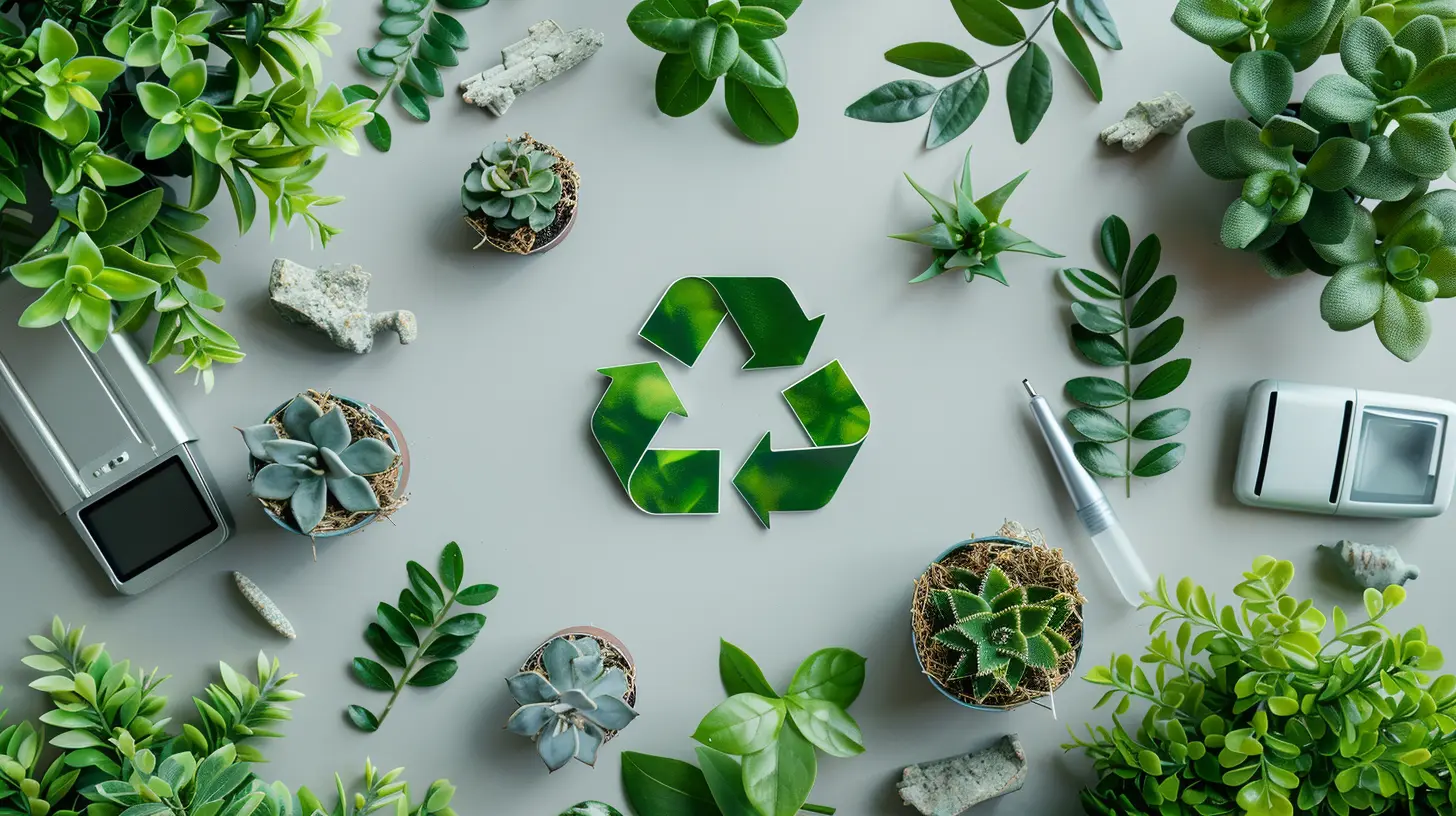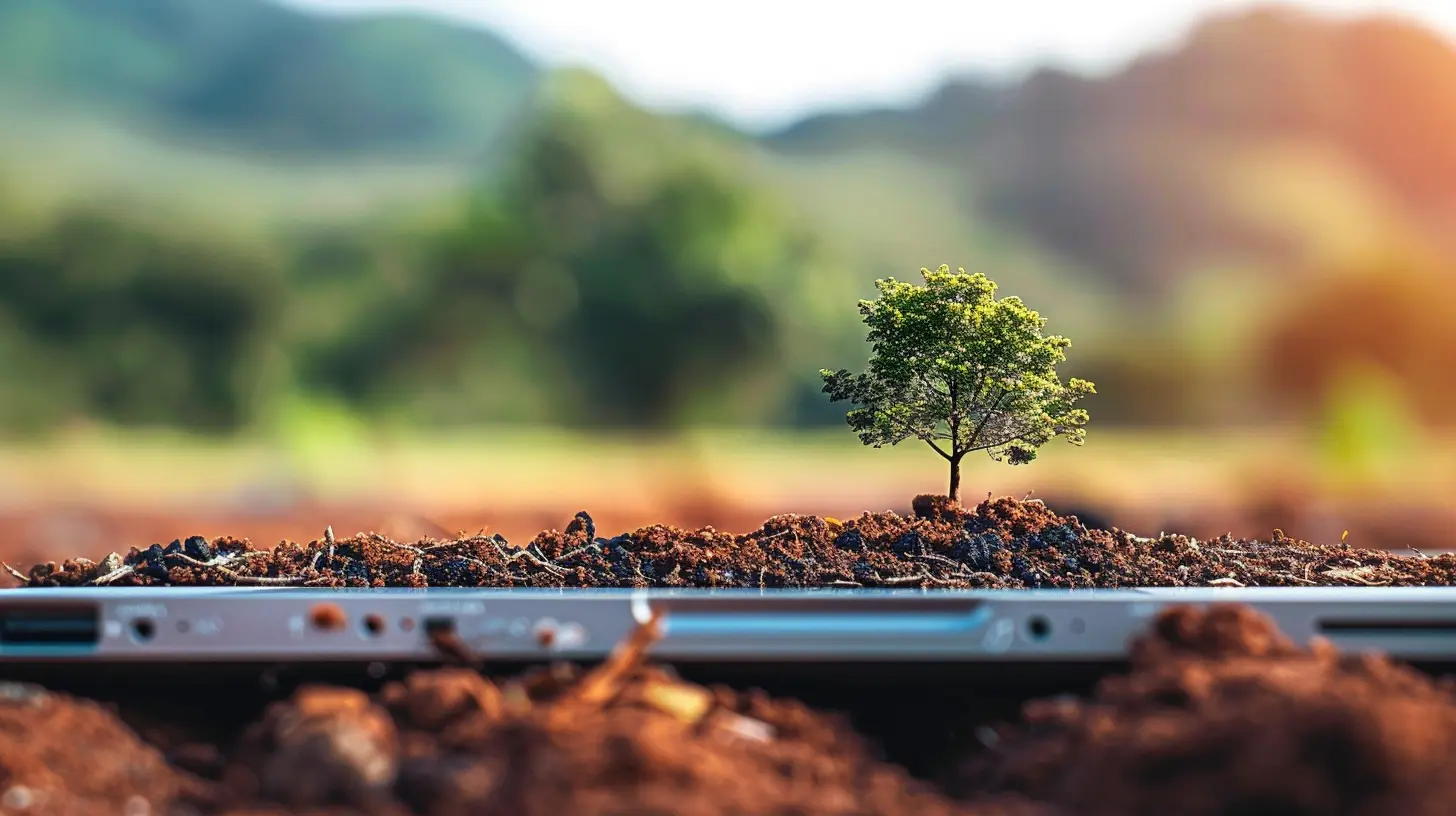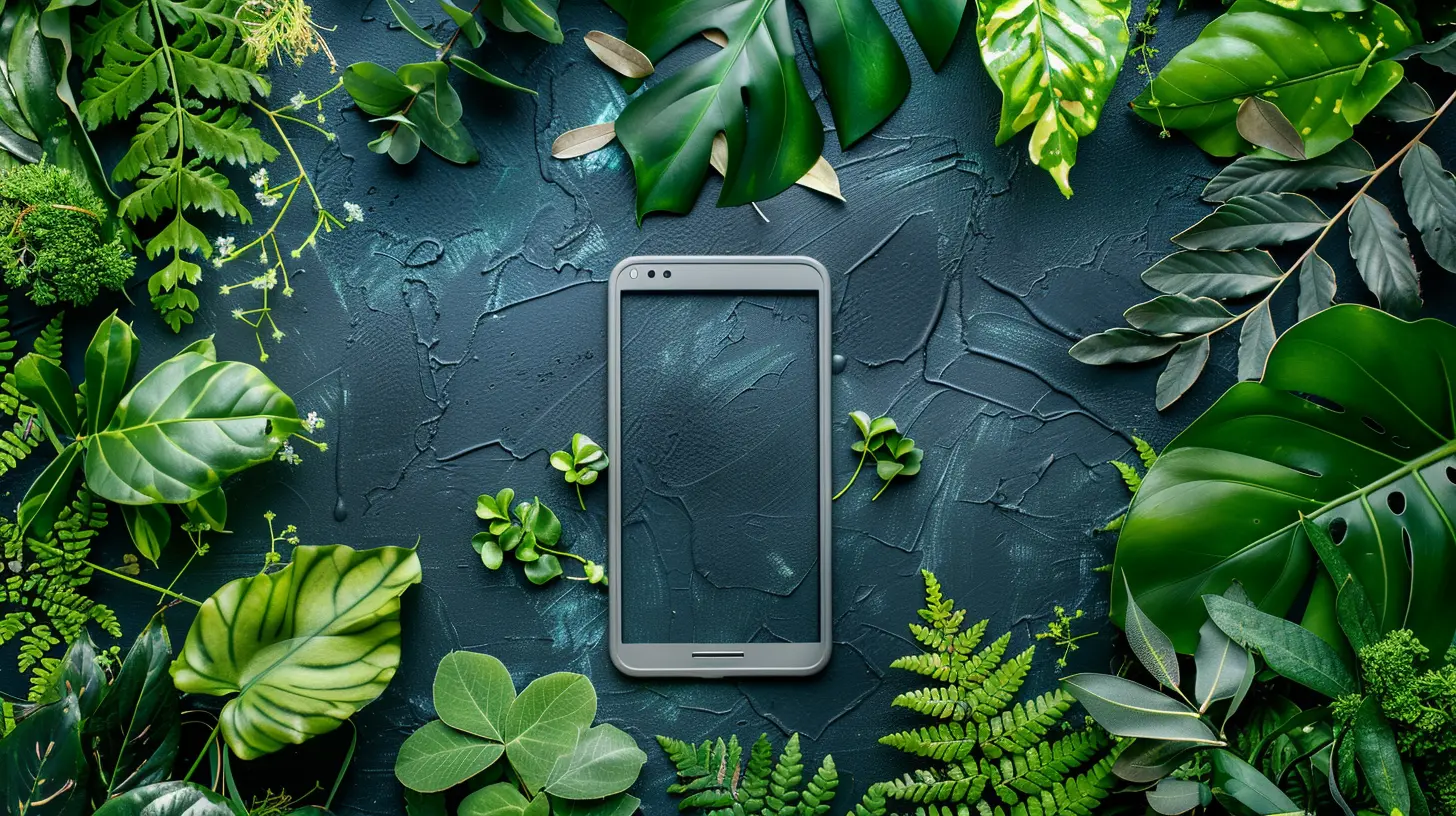Tech Solutions for Sustainable and Eco-Friendly Gadgets
10 August 2025
Let’s be real—tech gadgets have become the peanut butter to our jelly. We can’t go a single day without tapping, swiping, or yelling “Hey, [insert smart assistant name here]” across the room. But here’s the deal: our obsession with shiny new devices has an environmental cost. Think toxic e-waste, energy-hogging devices, and non-stop mining for rare earth metals. Yikes, right?
But don't toss your favorite gadgets out the window just yet. There’s good news on the horizon. The tech world is finally stepping up, diving headfirst into sustainable and eco-friendly practices that are turning our gizmo game green. Let’s break it down, geek-style, and figure out what’s happening in the wonderful world of low-impact, planet-loving tech.
🎯 Why Sustainability in Tech Even Matters
Let’s zoom out. Your average smartphone? It takes about 34kg of CO₂ to produce, and contains over 60 elements—many rare and non-renewable. Multiply that by the billions of devices sold yearly, and you’ve got a serious eco-disaster brewing.Now toss in all the packaging, the energy used during charging, the shipping, and the inevitable landfill graveyard. It’s like feeding a raging gremlin that grows every time we upgrade to the latest model, even if the old one works just fine.
That’s where sustainable tech solutions come into play. The goal? Shrink the environmental footprint from design to disposal.
🔋 1. Energy-Efficient Gadgets: Less Juice, Same Kick
Remember the days when you had to charge your phone twice a day and still walked around with 8% battery anxiety? Thankfully, those days are fading.- Smarter chips: Tech giants are crafting more energy-efficient processors. Think of Apple’s M-series chips—they’re like supercharged brains that sip power instead of guzzling it.
- OLED & e-ink screens: These display technologies are brighter and clearer but consume less energy compared to traditional LCDs. Your Kindle and smartwatch thank you.
- Battery innovations: Some startups are cooking up solid-state batteries that last longer, charge faster, and are way safer. It’s like upgrading from a leaky bucket to a sealed water tank.
Less power use = smaller carbon footprints. It’s a win-win.
🌍 2. Recycled and Renewable Materials: Trash Into Treasure
Believe it or not, your next speaker or laptop might be made from old fishing nets, recycled aluminum, or even corn-based bioplastics.- Recycled plastics: Brands like Logitech and Dell are leading the charge, transforming ocean-bound plastics into sleek tech frames.
- Eco alloys: Apple uses 100% recycled aluminum in many of its MacBooks and iPads.
- Natural alternatives: Some companies are even dabbling in bamboo, cork, or biodegradable polymers. Mother Nature would be proud.
This isn’t just good PR—it’s genuinely changing how we make tech.
🔁 3. Repairability and Modularity: Breaking Up with Planned Obsolescence
Ever tried opening up a modern gadget to fix it yourself? It’s like performing brain surgery with a butter knife. Not fun.But hope is on the horizon.
- Modular gadgets: Fairphone is basically the LEGO set of smartphones—you can swap out the battery, screen, or camera with a screwdriver. No genius bar required.
- Right to Repair: Movements across the globe are pushing for laws that make it easier for us regular humans to repair our own stuff. Because throwing out a device over a cracked screen? That's just silly.
- Longer software support: Companies are waking up and offering OS updates for older devices. That means your 5-year-old smartphone might get a new lease on life.
Fix it, don’t ditch it—that’s the mantra.
⚡ 4. Solar-Powered Everything: Meet the Sun-Powered Tech Squad
Who needs a wall socket when you’ve got the sun?- Solar chargers: These nifty little tools are perfect for outdoor adventurers who want to keep their phones juiced up while sipping on sunshine.
- Solar-powered wearables: Some smartwatches now use solar energy to extend battery life. Think of it as wearable tech with a built-in Vitamin D dependency.
- Self-sustainable devices: Certain garden sensors, outdoor cameras, or even e-readers live off solar alone. They’re like little photosynthesizing gremlins that never go dark.
Harnessing solar isn’t new. But integrating it seamlessly into our everyday tech? That’s the game-changer.
💻 5. Greener Manufacturing: From Sweatshops to Eco-Workshops
Production is where a huge chunk of carbon emissions happen. But it’s also where some of the biggest improvements are being made.- Zero-waste factories: Companies like HP and Samsung are aiming for zero landfill manufacturing.
- Water recycling: Tech giants are now reusing water during production instead of treating it like an unlimited resource (spoiler: it’s not).
- Cleaner energy: Many factories are powered by renewable sources like wind and solar, cutting down on dirty coal and gas.
It’s like going from a smoke-belching factory to a nature-loving tech greenhouse. Much better vibes.
🗑️ 6. Tackling E-Waste: The Digital Detox We Didn’t Know We Needed
Newsflash: We generate around 50 million metric tons of e-waste each year. That’s like throwing away 4,500 Eiffel Towers made of busted phones, laptops, and tablets. Ouch.But here’s how we’re fighting back:
- Buy-back and recycling programs: Apple, Samsung, and others let you trade in old devices, sometimes even for cash. Cha-ching.
- Donation and reuse: Non-profits refurbish old tech for schools or low-income households.
- Urban mining and ethical recycling: Fancy term, but it means extracting valuable metals from old gadgets, reducing the need for fresh mining.
Think of it as digital composting. Instead of tossing, we’re reusing and repurposing.
🧠 7. AI and IoT for Resource Efficiency: The Smart Side of Smart Tech
Smart homes aren't just cool—they’re eco-warriors in disguise.- Smart thermostats (like Nest or Ecobee): They learn your habits and adjust temperatures to save energy. Cozy and efficient.
- Sensor-based lights and faucets: These guys only work when you need them. Great for forgetful folks who leave everything on.
- AI-powered appliances: We now have AI washers that adjust water usage based on load size. It’s like having an eco-conscious butler in your laundry room.
Connecting everyday objects to the cloud might sound crazy, but they’re helping trim down waste one beep at a time.
👨💼 8. Tech Giants Going Green: When Big Tech Puts On The Cape
When the big kids on the playground go green, the ripple effect is massive.- Apple: Claims to be carbon neutral for corporate operations and aims for full product lifecycle neutrality by 2030. That’s huge.
- Google: Operating on 100% renewable energy since 2017. They’re basically solar-powered search engines.
- Microsoft: Going one step further—they aim to be carbon negative (yep, removing more carbon than they emit) by 2030.
Now is this just greenwashing? In some cases, sure. But there’s real momentum here, and when these giants shift, the entire supply chain feels it.
🛒 9. Making Greener Choices as Consumers
Here’s the truth bomb: what you buy matters. You, dear reader, are the unsung eco-hero of this story.So, how do you gadget-green your life?
- Choose brands that are transparent about sustainability.
- Buy refurbished instead of brand-new.
- Skip unnecessary upgrades—ask yourself, “Do I really need the new model, or do I just want it?”
- Unplug devices when not in use (ghost power is a real thing).
- Use dark mode—it actually saves battery on OLED screens.
It’s like voting with your wallet. Every eco-savvy choice nudges the market in the right direction.
🔮 The Future of Sustainable Tech: What’s Next?
What’s cooking in the tech labs of tomorrow? Here’s a quick peek:- Biodegradable phones: One day, you may compost your old phone like last night's banana peel.
- Graphene batteries: They charge in seconds, last for years, and are more eco-friendly. Basically the unicorn of the battery world.
- Lab-grown chips: Produced with less waste and fewer rare materials.
- AI-designed efficiency: Super smart algorithms optimizing the entire gadget life cycle—from production to disposal.
We’re not there yet, but we’re closer than we’ve ever been.
🧠 Final Thoughts
The bottom line? Tech doesn’t have to cost the Earth—literally. We’re moving into an era where our gadgets aren’t just smart—they’re conscious. And it’s up to all of us to keep pushing the industry toward greener pastures.So next time you power up that sleek screen, take a moment to think about what went into it—and where it’ll go when you're done. Because in the world of sustainable tech, every click, swipe, and scroll counts.
all images in this post were generated using AI tools
Category:
Technology InnovationAuthor:

Marcus Gray
Discussion
rate this article
1 comments
Brandon Warner
This article highlights crucial advancements in eco-friendly technology, showcasing innovative solutions that reduce environmental impact. By prioritizing sustainable materials and energy-efficient designs, the tech industry is paving the way for a greener future. It's inspiring to see innovation align with environmental responsibility!
September 2, 2025 at 10:29 AM

Marcus Gray
Thank you for your insightful comment! I'm glad you found the article inspiring. It's exciting to see how technology can contribute to a greener future.


